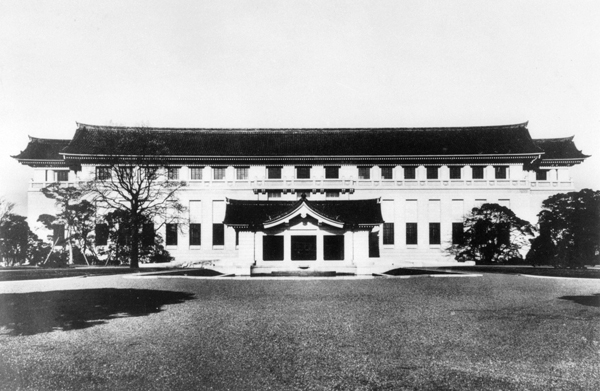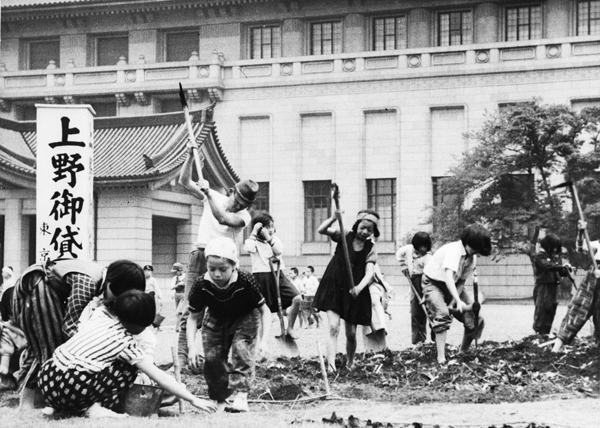10.Construction of the new Honkan : The Museum during World War II

Just after its completion
It took six years and cost seven million yen to build the new main building (the present Honkan), which was opened with the presence of Emperor Showa on November 10, 1938. The quake- and fire-proof building had two stories above ground and a basement, with a total floor space of 21,500 square meters. The building design was chosen from plans sent in by the public and was executed in Oriental style with an emphasis on Japanese elegance. The construction project was initiated and finally completed by the Imperial Museum Innovation Promotion Committee, organized 13 years earlier at the time of Emperor Showa's enthronement ceremony.
The new main building was equipped with the latest technology and had 25 exhibition rooms where fine collections of Japanese and Asian antiquities were displayed by using a new system of classification. The method was introduced to unite the history department with the art and decorative art departments and reclassify the historical collections based on the classification. This big reform began one year before the building's opening. After that, the history department was dissolved.
To mark the 2,600th anniversary of the first emperor's accession, the Shosoin antiquities were shown to the public in November 1940 for the first time in history. The Museum was inundated daily with visitors whose number reached 400,000 by the end of the 20-day exhibition.
Attendance at the new Honkan was numerous at first, but it was soon affected by the war. To avoid damage to the works, the Museum began to evacuate the collection in 1941, sending 334 precious items to the Nara Museum. This was followed by more evacuations to different locations, where museum staff were transferred to protect the items.
The Museum remained open, but with air raids intensifying, it was ordered to close on March 10, 1945, which continued until the end of the war. Over the years from the opening of the new Honkan until the end of the war, the Museum transformed itself into a museum specializing in art and eventually established the foundations for the present day. To this extent, this period was especially significant in the history of the Museum.

During WWII, people grew crops in the museum garden.
 |
 |
|||
